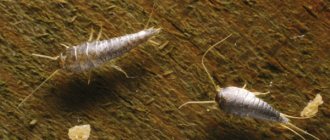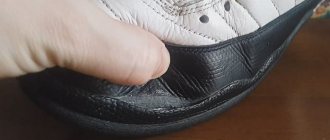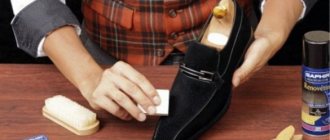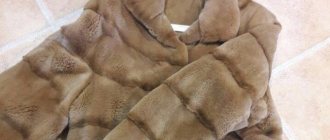Useful tips
Flowers are given on special occasions, and often without them, just to cheer someone up. They decorate halls for celebrations and gifts. However, fresh flowers tend to fade quickly.
In addition, dried flowers are an inexpensive, but no less wonderful alternative to a living bouquet. Lavender and roses, for example, retain their scent for a long time, delighting you, your loved ones and guests with it.
In this article we will tell you how to preserve the memory of a wonderful moment for a long time by drying the flowers that decorated the holiday of the soul and heart.
Press drying
The least simple way to obtain a herbarium, which is also called cold drying. Leaves with flowers are placed between the leaves of a book or paper towels. A press is placed on top. The book is used when they want to obtain a herbarium of small plants and in small quantities. In other cases, it is advisable to take a paper towel.
The blanks are ready for use within a week. When paper towels are used, they are changed daily. Often, if you overexpose flowers under pressure, they become too fragile. A solution prepared from PVA and water, taken in proportions 1:4, can correct the situation. Flowers and leaves for fakes and garlands can be dried without using a press. They can simply be laid out on paper and then carefully straightened out. If you plan to use the herbarium to create beautiful panels or paintings, a press is required. It is better to use a special one, which you can buy at a craft store or make yourself.
Collection rules
It all starts with preparing the material. Before drying the herbarium, you need to collect leaves and flowers. It is very important to choose the right time. The best option is warm, sunny weather around lunchtime. Remember that there should be no dew or rainwater on the leaves and flowers. Otherwise, you won't be able to dry them quickly. And this can easily lead to mold and hopeless damage to the prepared material.
Of course, it is recommended to choose only healthy plants, without signs of disease or leaves damaged by insects. Otherwise, the value of the herbarium will be significantly reduced.
It’s also worth remembering a few more simple rules:
- Small plants are collected entirely - along with roots and stems.
- You can take a branch from the bushes. It is advisable to cut it, rather than break it, in order to minimize the damage caused to the plant.
- For dioecious plants, you need to take male and female specimens. When working with monoecious plants, collect staminate and pistillate flowers.
- When working with trees, there is no point in taking a branch. It is enough to cut off the leaves, flowers and, if possible, fruits - all this will allow you to get the most complete impression of the plant and easily identify it.
Once the materials are collected, it's time to start drying. There are several options for preserving plants. We'll tell you about each one so that readers can easily choose the one that suits them best.
Hot drying
It is an express method for obtaining a herbarium. The dried plants are ready the next day. This option is best suited for cornflowers. Other types of flowers may turn pale, losing their attractive color.
Hot drying is not only fast, but also simple. Flowers and leaves are laid out on paper. Cover the top with another leaf and iron it until the plant loses all moisture, that is, steam stops flowing. Large inflorescences, the petals of which contain a lot of moisture, can be dried in the microwave or oven. The temperature should not be high. It is necessary to carefully monitor the entire process and prevent the petals from turning brown.
Compositions
Having learned how to dry flowers, you can prepare suitable material for the season: buds, ears, leaves, twigs with berries, reed stems and dried flowers. And then you can compose original compositions. Such bouquets look beautiful in wicker baskets, wooden vases, and clay pots. Dried flowers can be used in the design of wreaths and panels that will decorate the walls. Dry buds, tinted with gilded paint, will become an original decoration for the Christmas tree and New Year's table. There are a lot of possible applications.
Alternative blow drying
Microwaves and ovens are not the best way to obtain a herbarium. In addition, you have to periodically monitor the safety of the petals. The advantage of a hairdryer is that the flowers do not darken. Most parents, when preparing a herbarium for their child for school, dry the plant using this device. A very ordinary hairdryer without any bells and whistles will do. The main thing is that you can regulate the speed of hot air supply. If you turn on the device at full power, the leaves may quickly curl. In order for the herbarium to turn out well, the plant is allowed to “rest” from time to time, and then dried again with a hairdryer.
How to store dried leaves
The room for storing leaves for the herbarium should be dark and dry. The storage temperature does not matter. The air in apartments in winter is often too dry, which can have a bad effect on the collected material, so a glazed balcony or loggia can be an excellent place for storage.
The best storage containers are spacious cardboard boxes that prevent the workpieces from breaking and protect them from sunlight.
Tweet
Natural drying
It is very popular among summer residents and owners of country houses with their own plots. Plants can not only be hung by their stems, but also simply laid out. It is best to lay the future herbarium on rice napkins, blotting paper or cardboard. It is not recommended to cover plants. You should not place flowers under the scorching sun. It is enough to choose a non-humid place where enough natural light penetrates. The natural drying process takes from two to three weeks and allows you to harvest many flowers at once.
What can be made from dried flowers?
Flowers are dried for various purposes, it all depends on your desire and capabilities.
- Decorating a home or room. Dried bouquets of herbs and flowers are often placed in vases to decorate the interior, often in places where live indoor plants cannot grow. Increasingly, dried flowers are being used to decorate the home for the New Year holidays. They are sprinkled with artificial snow, rain or covered with multi-colored sparkles.
- Floral collages, compositions of dried flowers, appliqués, herbariums, panels, paintings and garlands. For paintings and panels, plants are needed after flat drying (book, press, glass or iron).
- Creation of various jewelry: earrings, pendant, ring, button. For this handmade craftsman, dried flowers or leaves are filled with epoxy resin (it is better to take a special “Crystal Resin”, the usual one often turns yellow very quickly).
Ring with clover leaf
Drying in water
Some flowering plants wilt quickly. They do not have time to dry out before withering. These include hydrangea, almost all bulbous, completely unblown carnations, lavender and so on. To obtain a herbarium from such plants, it is necessary to use combined drying - water plus air. Take some water into the vase. Four to five centimeters is enough. There should be a diagonal cut on the stem. Place the plant in the container, which will dry as the liquid evaporates. When the buds wither, the plants are removed. To prevent mold from appearing, the ends of the stems are trimmed. The plant is dried on cardboard, paper, or a napkin.
Tips for preserving a dry bouquet
It is important not only to know how to properly dry flowers, but also how to store them later so that they retain their attractiveness for several years. You should not place the bouquet in a brightly lit place. When exposed to direct sunlight, the delicate petals are destroyed and crumble. It is important that the room is regularly ventilated. Dry air is contraindicated not only for living plants, but also for dried ones.
Dust is the main enemy of dried plants. Because of it, they lose the brightness of their colors. You can spray the finished composition with hairspray - this will give the fragile inflorescences rigidity and shine. Another option is to place the ikebana under a glass cover.
Flowers are a creation of nature, and ikebana from dried flowers is a creation of human hands.
Drying flowers with bulk materials or volumetric
There are many substances that absorb moisture well. They are ideal for creating herbariums and flowers. Bulk materials help preserve the beauty of the petals. The most popular substances are silica gel, perlite, and borax. An alternative could be absorbent cotton wool. When dried in granular substances, the petals do not wrinkle and acquire a rich color.
Preparation
Flowers are cut on a sunny day. If there is too much precipitation, drying will take longer. Therefore, it is recommended to plan the preparation of a herbarium exclusively during the dry period, before the rains begin. The best time is noon or a little later, when the dew has already evaporated. Flowering plants are cut off along with the stem. Most of the latter is cut off, leaving very little. Carefully thread a thin wire inside. The end of the wire is wrapped in a ring. This method allows you to calmly connect the flower with the stem, which is dried separately.
Drying technique
The selected material is poured into a deep cup. You can take any cardboard box. Perlite, silica gel or borax are poured in a layer of one or two centimeters. The flower is placed on top so that the lower small piece of the stem is at the bottom. The petals are carefully sprinkled. It is necessary to ensure that they are separated from each other, and the substance penetrates deep inside. On a note! Bulk material can be used repeatedly. The main thing is to leave it in an open container, for example, on a windowsill to dry. When the flower is completely covered, the container is tightly closed. It should stand in a dry place for three to five days. The larger the inflorescences, the longer they take to dry. The dried flower is removed from the box using tweezers. The remaining powder on the petals is shaken off or blown off using a rubber bulb. The flower is connected to the stem.
What is a herbarium for?
Children love collecting herbariums. Teach them to do it right. At the same time, you can repeat the names of plants, compare the shape of leaves and flowers in different specimens, find similarities and differences, talk about how the plant has adapted to the place where it grows, what helps it survive and obtain the required amount of moisture, how it reproduces, when the seeds ripen, etc. The information that a child can receive while collecting plants for a herbarium will be remembered much faster than that read in a textbook.
Dried plants can be used for crafts, panels, appliques, or simply stored in albums with signatures and notes as a keepsake.
Identical plants can be glued onto cards and made into a board game, lotto, etc. Among other things, creating a herbarium is a great way to preserve memories of warm days.
Dear readers! Did you collect a herbarium as a child? Do you do herbariums with your children now? What do you use the dried leaves for? We are waiting for your answers in the comments.
river sand
It perfectly absorbs excess moisture and dries, but has one drawback. It lies in the fact that drying takes from two to three weeks. In addition, sand cannot be used immediately. It is first sifted and calcined over fire. The advantage is the availability of the material and the absence of the need to pay for the substance. For containers, it is best to take a container with an opening bottom. This allows you to quickly get rid of sand. If zinnias, calendula, and gerberas are dried, the flowers are placed face down. The rest, on the contrary, are placed in inflorescences on top. Otherwise, there is no difference between the previous method.
Selecting a dehumidifier
There are several popular desiccants - substances that quickly absorb moisture. Each has its own characteristics:
- Borax, corn and white flour . They are characterized by low cost. The duration of drying in desiccant is 8-18 days.
- Semolina . More suitable for small and medium flowers. Large petals may fall apart. The medium-sized inflorescences are perfectly preserved and keep their shape.
- Silica gel . Allows you to dry small colors in 2-4, and large ones in 6-7 days. It can be used repeatedly. The downside is the cost. For five liters you will have to pay 150-300 rubles. Before use, be sure to bake in the oven at 100 degrees for about 2-3 hours.
- Salt . Absorbs moisture well and has a low cost. It is often used to dry the herbarium, but you will have to wait about a month until the flowers dry. It is best to use fine salt, which can penetrate deeply into the petals.
If speed of drying of the herbarium is of paramount importance, it is best to use silica gel.
Absorbent cotton wool - an alternative to bulk substances
Flower petals are perfectly preserved when dried with absorbent cotton wool. Pieces of this material are placed between the petals. They must be separated from each other. The cotton wool must be placed carefully. Otherwise, the flower may be damaged and the petals will begin to fall off. Flowers are hung by the stems. Unlike creating a flower herbarium using bulk materials, you need to cut the plant completely. There is no need to separate the inflorescences from the stems. The flower heads take about 5-6 days to dry. Remove the plants a little later, when the stems are completely dry.
Paraffin method
A very interesting way to preserve the life of flowers is the wax or paraffin method. The flowers look life-like and last a very, very long time. For this method, you need to melt a sufficient amount of paraffin in a water bath in order to subsequently immerse the flower in it. After receiving liquid paraffin, it can be poured into a more convenient container for working with it. While the paraffin is still liquid, the flower is completely immersed in paraffin for 1-2 seconds so that the leaves do not cook. Then cool the flower a little and immerse it again 2-3 times. You can cover the flower with paraffin using a brush, carefully applying the wax to each of the petals. After which the flower is placed vertically in a glass to dry or hung on a rope.











